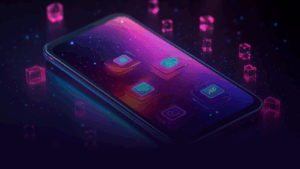TL;DR
- Retail stores are managing labor and experience challenges, facing a 20 percent drop in employees per 1,000 customers over the last decade
- Most customers now prefer using mobile apps for service, shifting demand away from physical stores
- Apps can serve as a gateway and terminal for service, deflecting unnecessary retail visits and expediting some visits when they are necessary
Retail operations in the mobile industry are facing operational cost and labor challenges. Today, 63 percent of retailers report a shortage of frontline employees, and half of those employees feel that staffing levels have deteriorated. Moreover, between 2016 and 2023, the number of telco employees per 1,000 customers dropped nearly 20 percent, even as total employee counts rose by 47 percent overall. This shortage can mean longer wait times for customers and translates into a far less positive customer experience. When retail wait times were 15 minutes or more, customer satisfaction fell by 13 points.
On the flip side, customer preferences are evolving rapidly. Nearly two-thirds of mobile operator customers now favor a “digital-first” or app-based initiation for getting service, which often reduces or eliminates the need for physical retail interaction. This shift underscores a major pivot in how mobile operators need to think about service delivery – shifting even more to the digital channels, such as browser or app, without compromising on the retail experience.
The Mobile App as a Gateway to Telco Customer Service
In this evolving landscape, the mobile app is not just an add-on; it’s a strategic gateway that can ease the burden on retail operations while meeting customers where they prefer to engage.
As retail stores adopt more digital tools to enhance and streamline the customer experience, the mobile app is emerging as a critical point of interaction. Far from replacing stores entirely, the app complements retail by providing a remote service channel that reduces the need for in-store visits when applicable.
The mobile app can act as a service and retail hub, or even primary terminal, where customers can complete journeys and bypass retail entirely for certain services or use retail to complete the last mile of a process. A typical example is the Buy Online, Pick Up In Store (BOPIS) model, which demonstrates how the app and retail can work hand-in-hand.
How the App Streamlines Telco Retail Burdens: Practical Examples
There are practical examples ways mobile apps are stepping in to support retail operations and improve customer satisfaction:
Trade-In Process Management
Customers can handle most of their device trade-in through the app, from receiving offers to device evaluation and pre-trade-in preparations, right up to scheduling device pickup. Vodafone’s implementation of this digital trade-in process resulted in a notable boost in customer Net Promoter Scores (NPS) and increased trade-in volumes, showing the power of a seamless, app-driven, digital experience.
Device Troubleshooting
Device issues affect one in five customers annually, and 64 percent currently visit a store to resolve these problems. However, 74 percent would prefer quick, on-device troubleshooting options. Providing self-service tools within the app can prevent unnecessary store visits and free retail reps to focus on more complex customer needs. When a customer visits retail, they can also use the app to resolve the issue with representative rather than using, longer more subjective troubleshooting methods.
Eighty percent of retailers plan to use technology to improve the store experience for customers and employees. At MCE Systems, we specialize in harnessing the mobile app as a central tool for mobile operators to improve customer experience and retail operations. Our digital-first, app-based solutions empower customers with efficient, on-device service options, helping out retail teams and elevating overall satisfaction. Explore it here.





